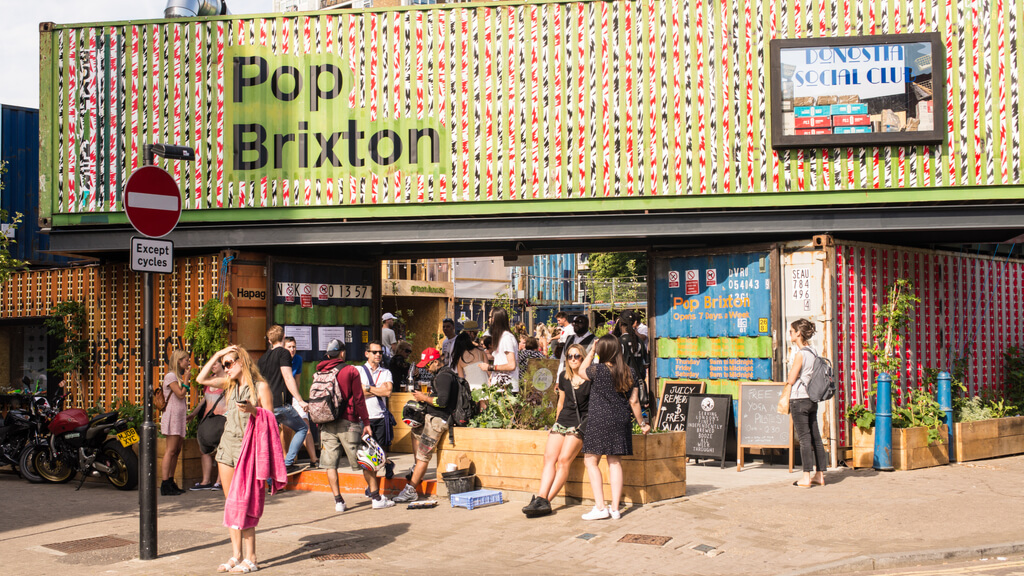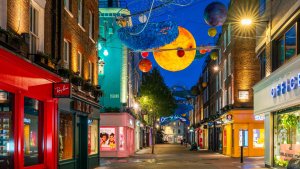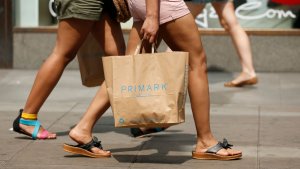It’s Time To Reclaim The Pop-Up
There's a way to inject real energy into our city centres.

In the past, the best pop-ups have offered an exclusive experience, an alternative version of a brand world to surprise and engage consumers and fans.
A high-end accessories brand in an underground car park. An international music star’s album at a local newsagent’s. A Parisian couturier taking over a London pub for one night. Such branded pop-up experiences have delighted consumers for years.
At their best and most creative, they have allowed brands to connect with and give something back to their fans in novel and disruptive ways. However, over the years the essence of a brand pop-up has been diluted, veering disappointingly into ‘branded activation’ territory.
Perhaps now is the time to reclaim its true spirit.
A pop-up answer in pandemic times
Admittedly, as the retail industry faces the fall-out from the global pandemic, pop-up opportunities have been few and far between. Bricks-and-mortar retailers have had an increasingly tough time.
Working from home has had a terrible impact on town centres and their retail mix and online shopping has grown by necessity. So brands have erred on the side of caution, increasingly putting physical experiences on hold.
In addition, sharp pop-ups tended to happen pre-COVID around cultural events, like fashion weeks and festivals. With these events called off, obvious pop-up opportunities have dwindled.
Some brands have tried to capture the exclusivity and excitement of the pop-up online. KFC Philippines, for example, made an appearance in the hugely popular Animal Crossing with its charmingly detailed virtual diner.
And UK fashion brand Ted Baker launched Ted’s Bazaar in May, a digital pop-up store that sold limited editions with all proceeds supporting local communities struggling due to the pandemic.
In the physical realm, brands have had to be more considered about showing up among restriction and social distancing. But that doesn’t mean they can’t show up. In fact, the current crisis allows brands to be even smarter and more surprising in connecting with their customers.
For example, one pop-up that generated a lot of engagement was BABE Wine’s manicure-truck in New York. Following months of confinement, the drinks brand came to the rescue with free, socially distanced pampering sessions, just as New Yorkers needed them most – and saw people queuing round the block.
Reclaiming the pop-up spirit
It is a great example of what is possible, and brand owners should embrace those possibilities. But it is worth remembering what an effective pop-up experience can – and should – be. There is no hard and fast definition, but a branded activation it is not.
There is nothing wrong with putting your logo on some deckchairs and a parasol to offer refreshment in the summer or touring a socially distanced haunted house for Halloween. These activations play an important part in the marketing mix. But they are not for pop-up purists.
The most effective pop-ups are brand guidelines exempt. The original spirit of the pop-up calls for a disruptive, rough-around-the-edges and surprising embodiment of a brand – often in direct opposition to the usual brand guides.
For example, when Anya Hindmarch turned up with a service station in Selfridges’ underground car park a few years ago, the luxury credentials of the brand clashed effectively with the distinctly low-end setting.
Showing up at the unexpected
This case also highlights the importance of location. Forget touring the UK’s shopping centres with your brand activation. When it comes to location, it is the unexpected that can make a pop-up much more thrilling and immersive.
Once the tougher restrictions are lifted again, it might be a good time to add a bit of bravery to your pop-up experience, to reclaim abandoned spaces and draw shoppers back into town with the promise of the unexpected.
Why opt for a department store when you can claim a disused prison for a week? Why choose a mainstream bar when your high-end drink can pop up in “gin lane” in Clerkenwell or a disused ballroom?
The pop-up offers a great way for a familiar brand to make an impression in a surprising manner, to force a reappraisal of what it stands for. An unexpected location adds exclusivity too – another key characteristic of a pop-up done well.
Finally, some of the best pop-ups are also limited, gone in a flash – they disappear as quickly as they pop up. Their temporariness and experimental nature are their strength. In a time where regulations and consumer behaviour change on a dime, the pop-up format can react and adapt.
Reaping the rewards
Putting significant marketing dollars aside for such a blink-and-you’ll-miss-it brand experience may seem counter-intuitive. Pop-ups are expensive, both in money and time needed to organise them, and this expense often outweighs what they might sell in terms of product.
But if done well, the halo effect you can achieve through social media reaps significant rewards. The value of a good pop-up lies in the earned media reach it can deliver.
We have seen a marked shift from ‘brand in broadcast’ to ‘brand in action’ – from an ‘advertising down’ approach to an ‘experience up’ one. Where call to actions turn into two-way conversations, the emphasis shifts from planned to responsive, and paid media becomes earned media.
Glossier, for example, is a company that has built a billion-dollar brand through such two-way conversations. As a DTC brand it uses pop-ups to build deeper relationships with its die-hard communities, and as a great way of testing the water in new markets.
So, as the annus horribilis of 2020 looks like it might end with a family-ish Christmas after all, why not inject some real energy into our city centres, and – as 2021 sees us, hopefully, emerging from restrictions once more – sprinkle a bit of pop-up magic.
By David Palmer is executive creative director at LOVE.
Thanks for signing up to Minutehack alerts.
Brilliant editorials heading your way soon.
Okay, Thanks!

